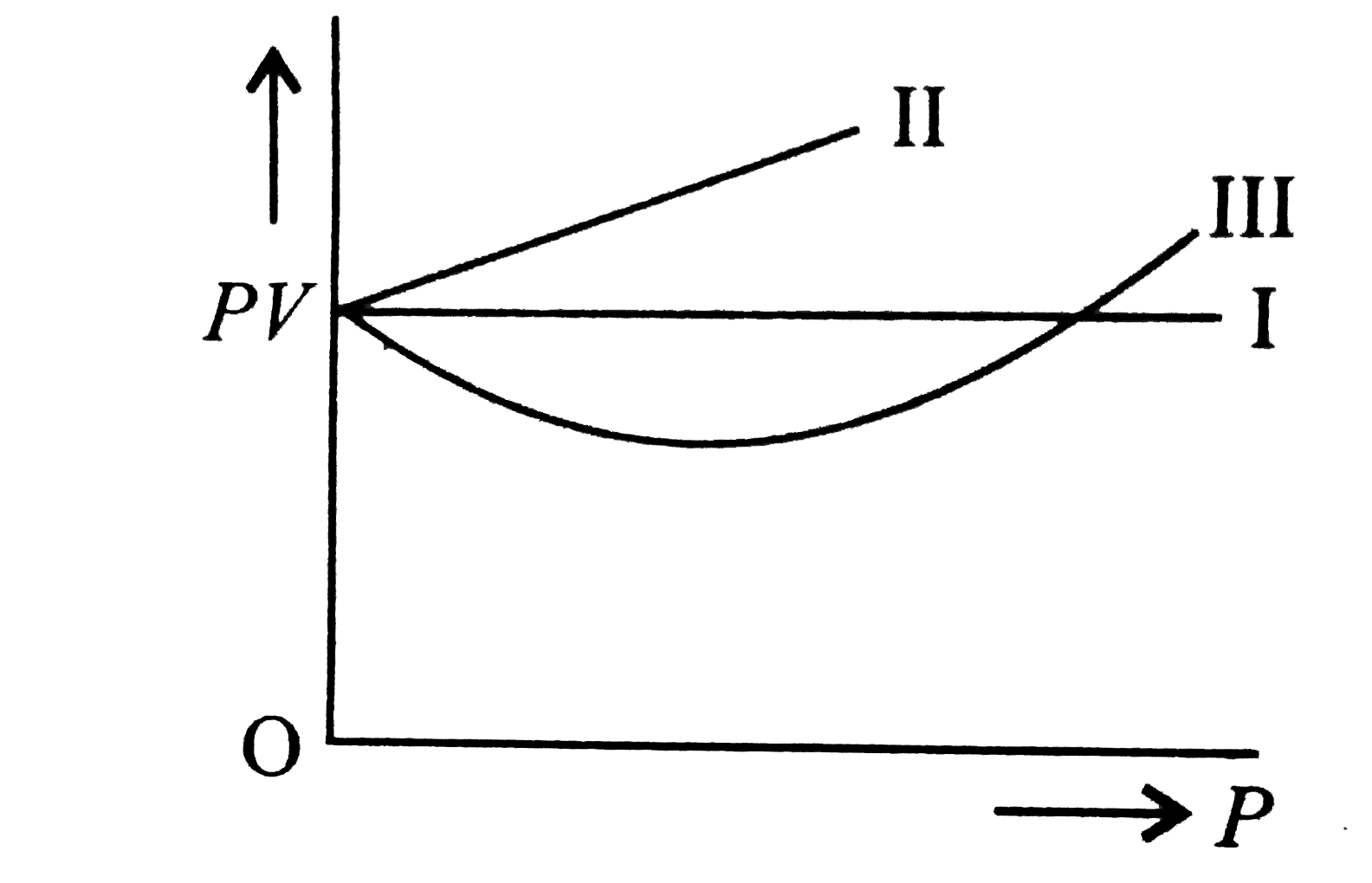Complete Solutions to Van Der Waals Gas Equation And Liquefaction Of Gases of chapter STATES OF MATTER of Class 11 book with complete answers and questions
| Class 11 | CHEMISTRY |
| Chapter | STATES OF MATTER |
| A2Z | Van Der Waals Gas Equation And Liquefaction Of Gases |
| Number Of Questions | 35 |
| Academic Year | 2023-24 |
For the non-zero value of the force of attraction between gas molecules, gas equation will be
View Solution`NH_(3)` is liquefied more easily than `N_(2)`. Hence
View SolutionAt low pressure, the van der Waals equation is reduced to
View SolutionThe temperature at which a real gas obeys the ideal gas laws over a wide range of pressure is called
View SolutionActual graph for the given parameters in (Q.25) will be

View SolutionA real gas at a very pressure occupies
View SolutionCalculate the compressibility factor for `CO_(2)` if one mole of it occupies `0.4` litre at `300K` and `40 atm`. Comment on the result:
View SolutionFor the non-zero value of the force of attraction between gas molecules, gas equation will be
View SolutionThe compressibility of a gas is less than unity at `STP`, therefore,
View SolutionCompressibility factor for `H_(2)` behaving as real gas is:
View SolutionThe value of compressibility factor at the critical state the gas matches with the `Z_(c )` is
View SolutionPressure exerted by `1` mole of methane, in a `0.25` litre container at `300K` using van der Waals' equation (given `a= 2.253 atm L^(2) mol^(-2), b= 0.0428L mol^(-))` is
View SolutionIf `bar(V)` is the observed molor volume of real gas and `bar(V)_(id)` is the molar volume of an ideal gas, then `Z` is
View SolutionWhich of the following is the correct set of volume calculated by ideal gas equation and van der Waals equation respectively for `1` mole `CO_(2)` gas at `300 K` and `10 atm` pressure. `(R= 0.0821 L atm K^(-1)mol^(-1))`
View SolutionA gas can be liquefied by pressure alone when its temperature
View SolutionRegarding the van der Waals constant which of the following is/are correct?
View SolutionWhich of the following satisfies the greater compressibility of real gas?
View SolutionThe correct order of normal boiling of `O_(2), N_(2), NH_(3)` and `CH_(4)` for whom the values of van der Waals constant `'a'` are `1.360, 1.390, 4.170` and `2.253 L^(2) atm mol^(-2)` respectively, is:
View SolutionWhich of the following characterstics the critical point?
View SolutionA real gas most closely approaches the behaviour of an ideal gas at:
View SolutionWhich of the following is true at the critical point?
View SolutionWhich of the given sets of temperature and pressure will cause a gas to exhibit the greatest deviation from ideal gas behaviour?
View SolutionThe ratio a/b (the terms used in van der Waals' equation) has the unit .
View SolutionWhich of the following is most suitable for liquefaction?
View SolutionUnder critical conditions, the compressibility factor for a gas is .
View SolutionFor which of the following gas/gases, `(P_(C )V_(C ))/(RT_(C ))` close to `0.22`?
View SolutionThe temperature at which a real gas obeys the ideal gas laws over a wide range of pressure is called
View SolutionWeight of `112 ml` of oxygen at `NTP` on liquefaction would be
View SolutionVirial equation is: `PV_(M)=RT[A+(B)/(V_(M))+(C )/(V_(M^(2)))+…]`, where `A`, `B`, `C`, …. are first second,third, … virial coefficent, respectively, For an ideal gas
View SolutionIt is eaiser to liquefy oxygen than hydrogen because.
View SolutionWhich of the following statements is incorrect?
View SolutionIt is possible to liquefy a gas
View SolutionThe correct order of temperature for a real gas is
`{:("Boyle temp.","Critical temp.","Inversion temp.",),((I),(II),(III),):}`
View SolutionRatio of `C_(p)` and `C_(v)` of a gas X is 1.4, the number of atom of the gas 'X' present in 11.2 litres of it at NTP will be
View SolutionWhich of the following exhibits the weakest intermolecular forces?
View Solution
Van Der Waals Gas Equation And Liquefaction Of Gases questions and complete solutions for chapter STATES OF MATTER of A2Z CHEMISTRY (HINGLISH) of Class 11
All Exercises from A2Z Class 11 CHEMISTRY STATES OF MATTER
- AIIMS Questions
- AIPMT/ NEET Questions
- Assertion - Reasoning Questions
- Dalton'S Law Of Partial Pressure, Graham'S Law Of Diffusion/ Effusion
- Gas Law (Boyle'S Law, Gay - Lussac'S Law, Avogadro'S Law)
- Ideal Gas Equation
- Kinectic Theory Of Gases, Maxwell Distribution Of Speed
- Liquid State
- Section B - Assertion Reasoning
- Section D - Chapter End Test
- Van Der Waals Gas Equation And Liquefaction Of Gases